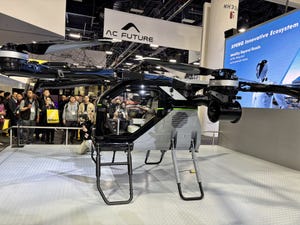Self-Driving Company Cuts Lidar Division, Eliminates 100 Jobs
Mobileye ends in-house lidar development and cuts jobs, shifting focus to imaging radar and cost-saving measures

Israeli autonomous driving tech company Mobileye will stop developing its own lidar.
The move will mean the loss of around 100 jobs by the end of the year.
The decision was revealed in a statement from the Jerusalem-based company, which confirmed: “Mobileye has chosen to end the internal development of next-generation frequency modulated continuous wave (FMCW) lidars for use in autonomous and highly automated driving systems.
“As part of our regular review of the long-term technology roadmap, we now believe that the availability of next-generation FMCW lidar is less essential to our roadmap for eyes-off systems.
“This decision was based on a variety of factors, including substantial progress on our EyeQ6-based computer vision perception, increased clarity on the performance of our internally developed imaging radar, and continued better-than-expected cost reductions in third-party time-of-flight lidar units.”
Lidar is sensing tech that uses laser pulses to build a 3D environment in front of a vehicle, allowing it to detect objects ahead, in doing so facilitating driver assistance features or autonomous functionality.
The use of lidar in autonomous driving solutions has become a polarizing issue in recent years. One high-profile skeptic has been Elon Musk, who has opted not to use the sensors on production Teslas. At various points he has dismissed the tech as a “fool’s errand,” “stupid, expensive and unnecessary” and a “crutch” for autonomous vehicle makers.
However, whether Mobileye’s decision can be wholly attributed to a genuine belief that alternative tech offers superior solutions is open to interpretation.
As the statement announcing the news confirmed, the move will save the company a significant amount of money. It read: “Operating expenses for the lidar R&D unit are expected to total approximately $60 million in 2024 (including approximately $5 million related to share-based compensation expenses).”
And the decision to pull the plug comes on the back of a difficult period for the company.
In March, it announced the closure of its aftermarket division, with the loss of 130 jobs. At the start of August, it significantly revised its annual revenue and profit forecasts downwards, due to falling demand for its driver-assistance chips, particularly in China where demand has slumped for cars because of a struggling economy.
CEO Amnon Shashua admitted in an earnings call at the time: “China automotive is very, very volatile. It's very difficult to make an accurate forecast.”
The move caused a significant drop in the Mobileye share price – stock is down nearly 70% this year – and with the company seemingly on track to record a third straight annual loss, it is now being widely rumored that Intel is keen to offload some of its 88% holding in the company.
Despite this uncertainty, Mobileye insists it is still focused on its future plans. Its statement reiterated: “This action does not impact any of our customer product programs or product development in general. In terms of Mobileye’s internal sensor development, imaging radar is a strategic priority.
“This is a core building-block technology that we expect to drive competitive advantage for Mobileye-based eyes-off systems in cost/performance optimization and scalability.”
About the Author
You May Also Like








